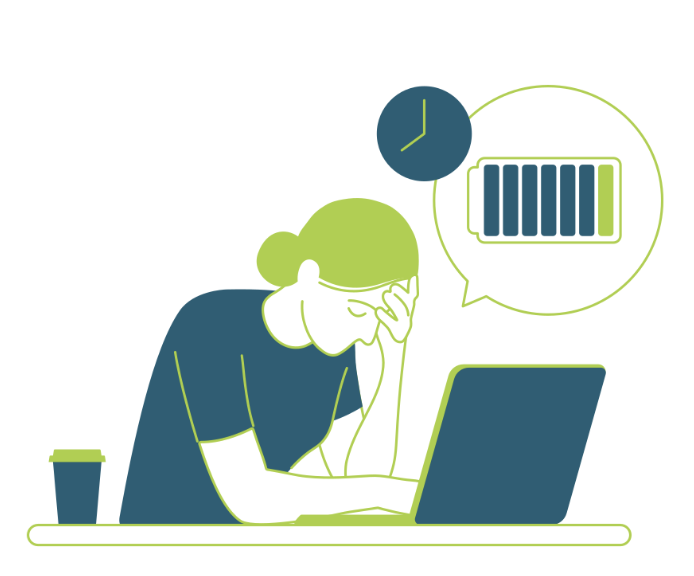In our newest book, Shift Writing into the Classroom with UDL and Blended Learning, Dr. Katie Novak and I guide teachers in creating the time and space to support all parts of the writing process in the classroom. Not only has the explosion of artificial intelligence (AI) and chatbots created concern about assigning writing, but myriad challenges exist when we send complex writing assignments home with students.
Writing is a Challenging Cognitive Process
Given the cognitive demands of writing, teachers should consider the potential barriers that exist when we send complex written work home with students to complete after school.
In the third edition of their book, Best Practices in Writing Instruction, Graham, MacArthur, and Hebert clearly describe the complex constellation of skills and processes involved in writing. “[Writing] requires the application of a variety of cognitive and affective processes. It is a goal-directed and self-sustained cognitive activity requiring the skillful management of the writing environment, the constraints imposed by the writing topic, the intentions of the writer(s); and the processes, knowledge, and skills involved in composing…Writers must juggle and master a commanding array of skills, knowledge, and processes, including knowledge about the topic and genre; strategies for planning, drafting, revising, editing, and publishing text; and the skills needed to craft and transcribe ideas into sentences that convey the author’s intended meaning” (p. 7-8).
#1 Hard to Motivate After a Long Day at School
After spending six to seven hours in a structured, often high-pressure academic environment, students face the additional burden of homework. This prolonged exposure to academic tasks leads to mental fatigue, reducing our students’ capacity to engage creatively and thoughtfully with writing assignments.
In addition to the mental demands of a long school day, writing assignments are often one-size-fits-all, requiring that diverse groups of students respond to the same prompts, regardless of their interests or ability level. As a result, writing assignments often fail to meet the psychological needs of autonomy, competence, and relatedness required for motivation (Deci & Ryan, 2016).
- Autonomy: The learner rarely has control over the topic they are writing about or the lens they look through as they complete a writing task.
- Competence: Students may not feel confident in their writing skills generally or their ability to answer a particular question specifically. If there is only one pathway provided, students may question their ability to complete a writing task successfully (Boscolo & Gelati, 2007).
- Relatedness: At home, students do not have the support of their learning community. They are isolated and left to navigate the task without any peer interaction or support.
All of these factors may contribute to a lack of motivation to produce thoughtful writing at home. It should not surprise anyone that students who are mentally and physically exhausted from a long day at school may be tempted to utilize an AI chatbot to produce written responses.
#2 Sending Writing Home Creates Equity Issues
When teachers send writing assignments home with students, we are making a lot of assumptions about our students’ home environments. There are a host of equity issues to consider when we assign writing to be completed at home (Calarco, Horn & Chen, 2022).
As a writer, I know how critical it is that I have a quiet space to concentrate on a writing task. Many of our students may not have a dedicated and quiet workspace. They may be sharing space with other family members, which can make it challenging to concentrate on cognitively challenging tasks.
Many of our students are juggling additional responsibilities at home, like caring for a younger sibling or aging grandparent. Other students may work part-time jobs after school, leaving less time for homework. These responsibilities may make it challenging to dedicate the time required to writing assignments.
Even if they do have a quiet space and the luxury of time, they may not have adults in their home environment who can answer questions or lend support as they work. Family members might not be fluent in the language of the writing assignments, or they may lack the necessary writing skills to assist their students effectively.
Technology access can be another barrier. Students asked to produce writing on digital documents may not have access to a device and a reliable internet connection to complete that work and submit it digitally.
When we send writing assignments home with students to complete, we may inadvertently be setting our most vulnerable students up to fail.
#3 Students Benefit Feedback and Support as They Write
Feedback is pivotal as students navigate the complexities of learning how to write for a particular purpose or audience. Students need feedback that is specific, timely, and actionable to develop the confidence and ability to demonstrate their knowledge and learning in writing. Targeted process-based feedback supports students in refining their writing abilities and articulating their thoughts more effectively.
The best way to ensure feedback is timely and actionable is to ensure we are dedicating class time to feedback as students write. Too often, feedback is given on finished products. Instead, we want teachers to pull all parts of the writing process, from deconstructing and analyzing writing samples to planning and pre-writing to revision and editing, into the classroom where teachers can actively support this complex cognitive process.
Call to Action: Let’s Reimagine When and Where Writing Happens
As educators, when we assign complex writing tasks for students to complete at home, we inadvertently deprive them of the essential support and immediate feedback that are crucial for their development as confident and competent writers. The solitary nature of completing a writing assignment at home stands in stark contrast to the collaborative and interactive learning environment of a classroom. In the classroom, students have the advantage of access to teacher guidance, peer interactions, and instructional scaffolds and support. These are vital in helping students navigate the intricacies of writing, from planning and pre-writing ideas to structuring and organizing their writing effectively.
The home environment, with its varied distractions and potential lack of suitable writing resources, can significantly impede a student’s ability to focus and engage deeply with the writing process. This isolation during the writing process means students miss out on the opportunity to ask questions, receive clarification, and gain insights from the real-time exchange of ideas that occurs in a classroom.
It’s essential to reconsider the practice of sending writing assignments home and explore alternative approaches that make writing assignments more accessible, inclusive, and equitable. This requires dedicating classroom time to the writing process, incorporating technology strategically to support the process, and establishing peer feedback protocols that encourage collaboration among students.
By reimagining where and when writing happens, teachers in every subject can ensure their students are not just completing assignments but are genuinely developing the skills, confidence, and passion for writing that will serve them throughout their academic and professional lives.
Shift Writing into the Classroom – Pre-order Available!
Learn how to shift writing INTO the classroom, so students aren’t going home with writing assignments and tempted to use AI chatbots to produce the writing for them! Want to learn more about why Dr. Novak and I wrote Shift Writing into the Classroom? Check out my podcast episode on the book!
When you pre-order a copy of 𝙎𝙝𝙞𝙛𝙩 𝙒𝙧𝙞𝙩𝙞𝙣𝙜 𝙄𝙣𝙩𝙤 𝙩𝙝𝙚 𝘾𝙡𝙖𝙨𝙨𝙧𝙤𝙤𝙢 by January 8th, we’ll send you the “Active Reading Observation Journal” Choice Board that you can begin using right away! This tool is designed to help students hone their observation skills and discover tips and tricks to implement in their writing practice immediately! Plus, it works across all subject areas!
Deci, E. L., & Ryan, R. M. (2016). Optimizing students’ motivation in the era of testing and pressure: A self-determination theory perspective. In Building autonomous learners: Perspectives from research and practice using self-determination theory (pp. 9-29). Singapore: Springer Singapore.
Boscolo, P., & Gelati, C. (2007). Best practices in promoting motivation for writing. Best practices in writing instruction, 202-221.
McCrory Calarco, J., Horn, I. S., & Chen, G. A. (2022). “You need to be more responsible”: The myth of meritocracy and teachers’ accounts of homework inequalities. Educational Researcher, 51(8), 515-523.









No responses yet